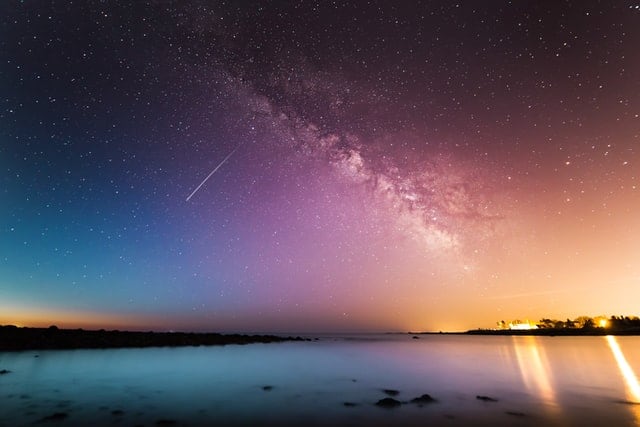The universe is terrifyingly huge as the Earth is but a mere speck of dust in the larger scheme of things. Our planet belongs to our very own solar system that revolves around the Sun, and the Earth itself is already small in comparison to the solar system. Meanwhile, the solar system is but a small portion of an entirely bigger Milky Way galaxy, which also belongs to the bigger universe. So, is the Milky Way an average-sized galaxy if it already is large enough from our perspective?
The Milky Way is actually above-average in size but is the second-largest galaxy in the Local Group, which has 30 galaxies. That means that it is still pretty big but not much bigger than most of the other galaxies in our known universe. However, it still pales in comparison to the size of the Andromeda Galaxy.
The Milky Way is but a mere part of a larger galaxy the same way as our own planet is a small fraction of the entire whole that makes up the Milky Way. Still, though, there are a lot of things that not a lot of people know about the Milky Way and the stars and the planets found in this large galaxy.
Is the Milky Way an average-sized galaxy?
Before we start talking more about the Milky Way galaxy and its size in comparison to the other galaxies in the known universe, let us try to talk more about the smaller components that make up our galaxy first so that it will be easier for us to discuss the larger scheme of things.
At this point, you may already know how large the Earth is in comparison to humans. If you are riding in a commercial airplane will take about 19 hours for you to circle the entire globe due to how large it is. But you have to know that the Earth is only the fifth-largest planet in the solar system and is far smaller than the other planets.
Compared to Jupiter, which is the largest planet in the solar system, the Earth is 318 times smaller in terms of its overall mass. Meanwhile, one million Earths can fit inside the Sun. And when you look at the larger scheme of things, the entire solar system we belong in is 36 billion times larger than the Earth. You’d have to have 36 billion Earths to make up an entire solar system, which only goes to show how small and insignificant our size is compared to the rest of space.
But, then again, the entire solar system we belong to is also just a mere fraction of an even larger system in space. The solar system forms part of a galaxy we call the Milky Way. And how large is the Milky Way? Well, it is 100,000 light-years in diameter and you would need 890 billion Suns to make the Milky Way. That means that you cannot comprehend how much bigger the Milky Way is compared to our planet.
Let’s make the Milky Way’s size easier to comprehend. To put it into perspective, let’s say that the distance between Neptune (the farthest planet from the Sun) and the Sun is about the size of a quarter (the coin), then the Milky Way is the size of the entire United States not including Alaska and Hawaii. Just imagining how many quarters you can fit in the US will make your head hurt when it comes to imagining the sheer size of the Milky Way.
But our solar system isn’t the only system that forms the Milky Way because there are plenty of other stars with their own planetary systems that can be found in it. This is precisely the reason why we are so insignificant in comparison to the larger scheme of things of the entire milky way galaxy. And let’s not even talk about how large the known universe is compared to the Milky Way.
So, is the Milky Way just a regular-sized galaxy or is it a really big galaxy? Well, the honest truth is that the Milky Way is actually pretty large. And no, we are not talking about how large it is in comparison to the solar system we belong to but we are talking about how large it is compared to the other galaxies found in the Local Group, which is a group of galaxies that the Milky Way belongs to.
That said, the Milky Way is second only to the Andromeda Galaxy in terms of its overall size in the Local Group. However, the Milky Way isn’t really that big when compared to the other galaxies and is not especially large even though it still is quite big enough for us to say that it is an average-sized galaxy or at most above-average.
Some of the other notably bigger galaxies include the Andromeda Galaxy, which is more than twice the size of the Milky Way. NGC 6872 is 522,000 light-years in diameter, Malin 1 spans 650 light-years. Finally, IC 1101 is the largest galaxy we have in the known universe and about 6 million light-years in diameter, which makes it a lot bigger than any of the other galaxies we have observed.
So, in that regard, the Milky Way might be bigger than any of the other galaxies in the Local Group except for Andromeda but it still isn’t as big as any of the other galaxies we have in the known universe.
How many stars are in the Milky Way?
As mentioned previously, galaxies are formed by different systems of stars. The solar system is only one of such systems as galaxies can contain plenty of other stars. In fact, the Milky Way itself is large enough to contain 890 billion Suns. That’s how big it is.
So, if it can be large enough to have 890 billion Suns, just how many stars are there in the Milky Way? Well, there is no certainty but the estimate is that the Milky Way has about 100 to 400 billion stars. And, in case you didn’t know, stars have their own systems similar to how our Sun has its own solar system. So, in that regard, the Milky Way can potentially have at least 100 billion other systems of stars that have their own planets.
Think of the possibilities of a planet that may be similar to that of ours because of how there can possibly be hundreds of billions of other planets in our own galaxy waiting to be discovered and observed. That planet can be habitable to life as well but it can be pretty difficult to look for something like that considering that there are billions of them in our galaxy our own. Think of how many more planets are there in the known universe if you factor in the other planetary systems found in the other different galaxies that exist.
How it compares to others
If there can be as many as 400 billion stars in our own Milky Way galaxy, how does it compare to the other galaxies we know of and have observed?
In the case of the Andromeda Galaxy, which is one of the nearest neighboring galaxies to the Milky Way, there are about a trillion stars there. Meanwhile, a galaxy as large as the IC 1101 has about 100 trillion stars. That means that the bigger the galaxy is, the more stars it has simply because it is the stars that make up a galaxy.
How big is the Milky Way compared to the universe?
As larger as the Milky Way may be, it still pales in comparison to the other galaxies in the universe such as Andromeda and IC 1101, among others. That means that it is a lot smaller than the size of the known universe.
The universe is always expanding and it will always grow in size the older it gets because of how it has been naturally expanding ever since the big bang.
However, there are studies that suggest that we already know the size of the universe, at least from our perspective because the observable universe is merely the universe that we are capable of observing. That means that the universe is a lot bigger than the one we know of especially when you consider that the universe we can observe right now is much older than it is.
So, in that regard, how big or small is the Milky Way compared to the universe? Well, we already know that the Milky Way is between 100,000 to 150,000 light-years in diameter but the observable universe is a lot bigger and is estimated to be 93 billion in diameter. That means that the entire observable universe is about 930,000 times larger than the Milky Way.
And we are only talking about the observable universe! Think of the possibilities of how much larger the universe truly is if we can expand from what we can observe.

